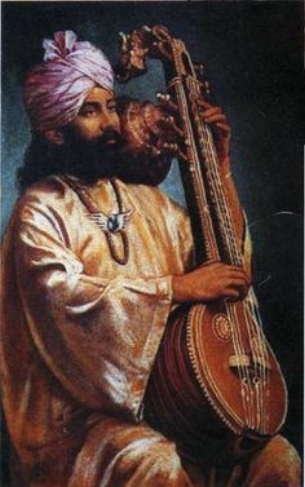"I was transported by destiny from the world of lyric and poetry to the world of industry and commerce . . . America the land of my future . . ." — Hazrat Inayat Khan
Inayat Khan was born in Baroda, India, on July 5th, 1882, the descendant of a famous family of Indian classical musicians. His grandfather, Sholay Khan Maulabakhsh, was one of the greatest musicians and poets of his time. At twenty, Inayat began to travel throughout India, following in his grandfather’s footsteps, likewise becoming one of the most famous Indian classical musicians of his day. Nevertheless, even as his fame as a musician grew, so too did his interest in the spiritual life, as well as his desire to discover the hidden connections between music and mysticism.
In time, he became the disciple of Muhammad Abu Hashim Madani of Hyderabad, a Sufi of Arabic descent and head of the Chishti-Nizami-Kalimi lineage of Sufis. Over a period of four years, from 1904 until his master’s death in
1908, Inayat Khan remained in Hyderabad studying devotedly under Abu Hashim Madani, who instructed him in the teachings and practices of the four great lineages of Sufism. At his master’s deathbed, Inayat Khan was given the directive that would change his life—“Fare forth into the world, my child, and harmonize East and the West with the harmony of your music; spread the wisdom of Sufism abroad, for to this end art thou gifted by God.”
Two years later, in 1910, Hazrat Inayat Khan set sail for the United States. Accompanied by two brothers and a cousin, together they traveled through the United States as the Royal Hindustani Musicians, presenting Indian classical music to Western audiences for the first time. After such concerts, Inayat would often lecture on Sufism. In San Francisco, in
1911, following one such lecture, he met his first Western student, Ada (Rabia) Martin, the first American Sufi, and later, the first acknowledged spiritual teacher of Sufism in America.
In 1912, Inayat Khan married Ora Ray Baker, an American cousin of the founder of Christian Science, Mary Baker Eddy, and began to travel extensively through Europe, lecturing and playing music, especially in France and Russia. On his return from Russia, he first settled in France, but then left for London in 1914, where he would remain until the end of World War I.
In England, Inayat Khan truly began to organize and develop universalist Sufism, founding an organization called the Sufi Order of the West, under the auspices of which he lectured more formally on Sufism and trained western Sufi initiates.
In 1920, Inayat Khan moved his wife and four children back to France, to Suresnes, on the outskirts of Paris. As his fame and obligations increased, he traveled more and more throughout Europe and the United States. It was only during the summer months that he could return to his home in Suresnes. These summer months were intended to be a period of quiet and retirement from teaching, but soon many students began to gather at his home, where Inayat Khan lectured to them and instructed them privately on the path. Thus, out of this intended retreat grew the Sufi Summer School, soon the busiest and most popular of his Sufi activities, and the focal point of his teaching.
Portrait of Inayat Khan by Gregory Blann.
After the closing of what was to be the last Summer School under his guidance, Hazrat Inayat Khan left for India in October of 1926. His fame having already preceded him, he was continually urged to lecture and to give instructions in Sufism. Early in 1927, he made a pilgrimage to Ajmer, to revisit the tomb of Khwaja Mu‘in ad-Din Chishti, the founder of his lineage. Soon after, he became ill and died on February 5th, 1927, at Tilak Lodge, Delhi. He was buried in the precincts of the tomb of the great Chishti master, Nizam ad-Din Awliyya, where is own tomb is now a site of pilgrimage.



